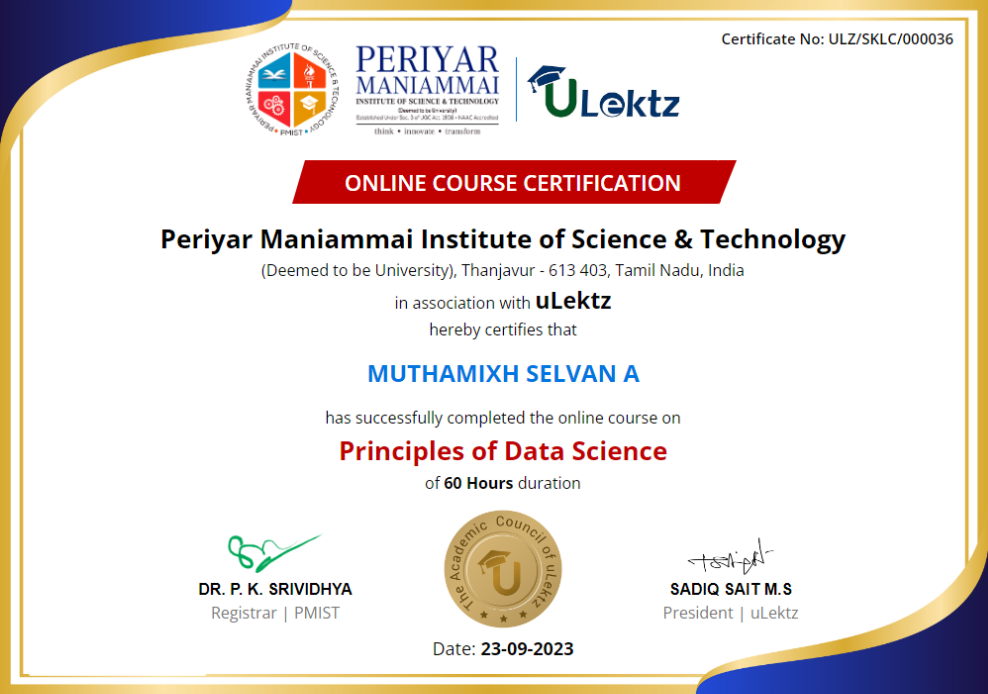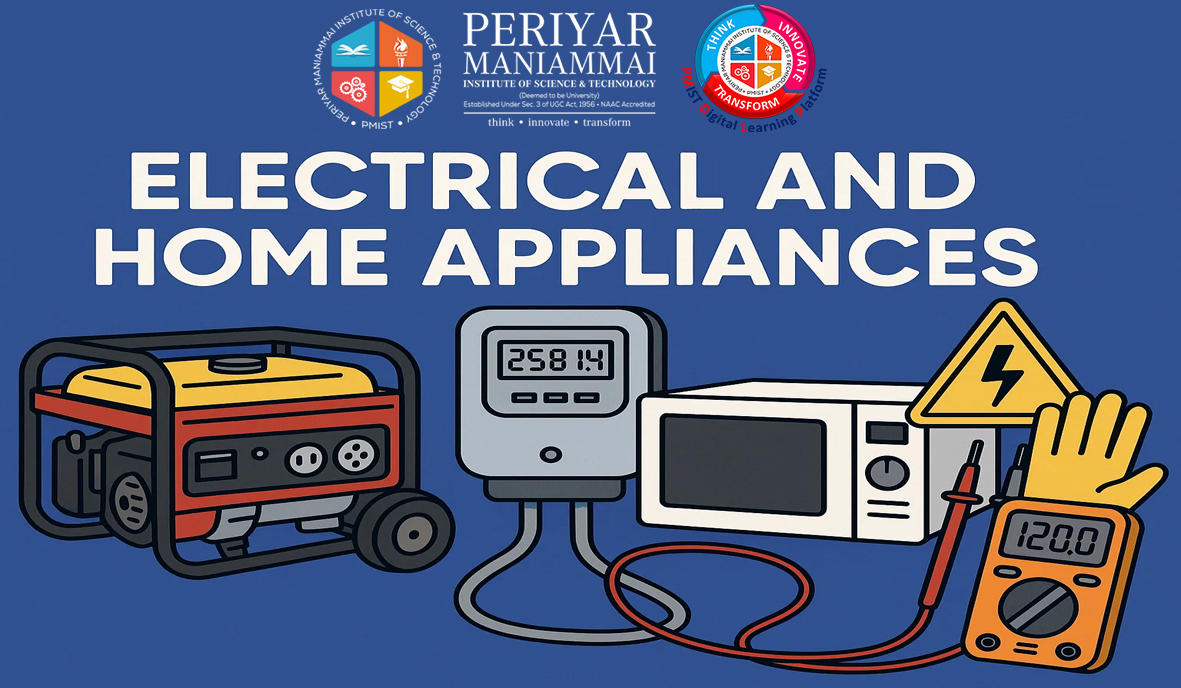

Note: Please check your Spam or Junk folder, in case you didn't receive the email with verification code.
Linear: Sequential Order
This course introduces students to the basic principles of electrical engineering and the working of common domestic electrical appliances. It covers both theoretical concepts such as electric circuits, electrical quantities, and safety, as well as practical knowledge related to household wiring, components, and appliances. The course emphasizes understanding, usage, and maintenance of appliances typically found in domestic settings.
By the end of this course, students will be able to:
Understand the fundamental concepts of electricity and electrical safety
Identify and interpret key electrical terms and measurements
Differentiate between AC and DC circuits and understand their behavior
Gain hands-on knowledge of electrical accessories and household wiring
Understand the operation and maintenance of common domestic electrical appliances
Basics of electricity
Methods of power generation
Transmission from grid to home
Types of electrical materials: conductors, insulators, semiconductors
Electrical safety and precautions
Electric shock and prevention
First aid for electric shock
Definitions: current, voltage, resistance, ampere, volt, ohm
Ohm’s law and capacitance
Kirchhoff’s Laws
Types of circuits: closed, open, short, leakage
Series and parallel circuits
Electrical energy and power: watt, kWh
Power consumption basics
Introduction to alternating current (AC)
AC waveform, RMS and peak value, phase difference
Power factor
Behavior of resistive, inductive, and capacitive circuits
Effects of electric current: magnetic and heating
Measuring instruments: ammeter, voltmeter, ohmmeter, wattmeter, multimeter
Introduction to tong tester and tachometer
Common electrical accessories: switches, circuit breakers, fuses, sockets
Earthing
Single-phase and three-phase systems
Star and delta connections
House wiring basics
Overloading and wire color coding
Introduction to transformer, battery, inverter, and UPS
Lighting devices: incandescent bulbs, fluorescent lamps, LED, street lighting
Appliances: electric fan, mixer, grinder, water heater, iron box, induction heater
Voltage control: stabilizer
Introduction to washing machine working and maintenance
Covers the basic principles of electricity, methods of power generation, and how electricity is transmitted from the grid to homes. Introduces types of materials used in electrical systems and emphasizes safety practices, prevention of electric shocks, and emergency first aid procedures.
 Introduction to Electrical Engineering
Introduction to Electrical Engineering
 EHA - Assessment 1
20 Questions
EHA - Assessment 1
20 Questions
Introduces key electrical terms such as current, voltage, resistance, and capacitance. Explains Ohm’s law, Kirchhoff’s laws, and types of electrical circuits. Discusses energy, power, and electrical consumption with a focus on understanding real-world DC systems.
 Electrical Terms and DC Circuits
Electrical Terms and DC Circuits
 EHA - Assessment 2
20 Questions
EHA - Assessment 2
20 Questions
Explores the nature and characteristics of AC circuits, including waveform, power factor, and the behavior of different types of loads. Introduces various electrical measuring instruments and their practical usage in measuring voltage, current, resistance, and power.
 AC Circuits and Electrical Measuring Instruments
AC Circuits and Electrical Measuring Instruments
 EHA - Assessment 3
20 Questions
EHA - Assessment 3
20 Questions
Focuses on the components involved in electrical connections such as switches, fuses, sockets, and breakers. Introduces wiring systems, color codes, and types of power phases. Also covers transformer basics and the role of power backup systems like inverters and UPS.
 Electrical Accessories and Connections
Electrical Accessories and Connections
 EHA - Assessment 4
20 Questions
EHA - Assessment 4
20 Questions
Provides an overview of commonly used household electrical appliances, their working principles, and safe handling. Includes lighting solutions, heating devices, kitchen appliances, and washing machines, helping students understand everyday technology and perform basic troubleshooting.
 Domestic Electrical Appliances
Domestic Electrical Appliances
 EHA - Assessment 5
20 Questions
EHA - Assessment 5
20 Questions
 EHA Final Assessment
50 Questions
EHA Final Assessment
50 Questions
The certificate issued for the Course will have
Only the e-certificate will be made available. No Hard copies. The certificates issued by Periyar Maniammai Institute of Science & Technology (PMIST). can be e-verifiable at www.ulektzskills.com/verify.



 90 hours Learning Content
90 hours Learning Content 100% online Courses
100% online Courses English Language
English Language Certifications
Certifications